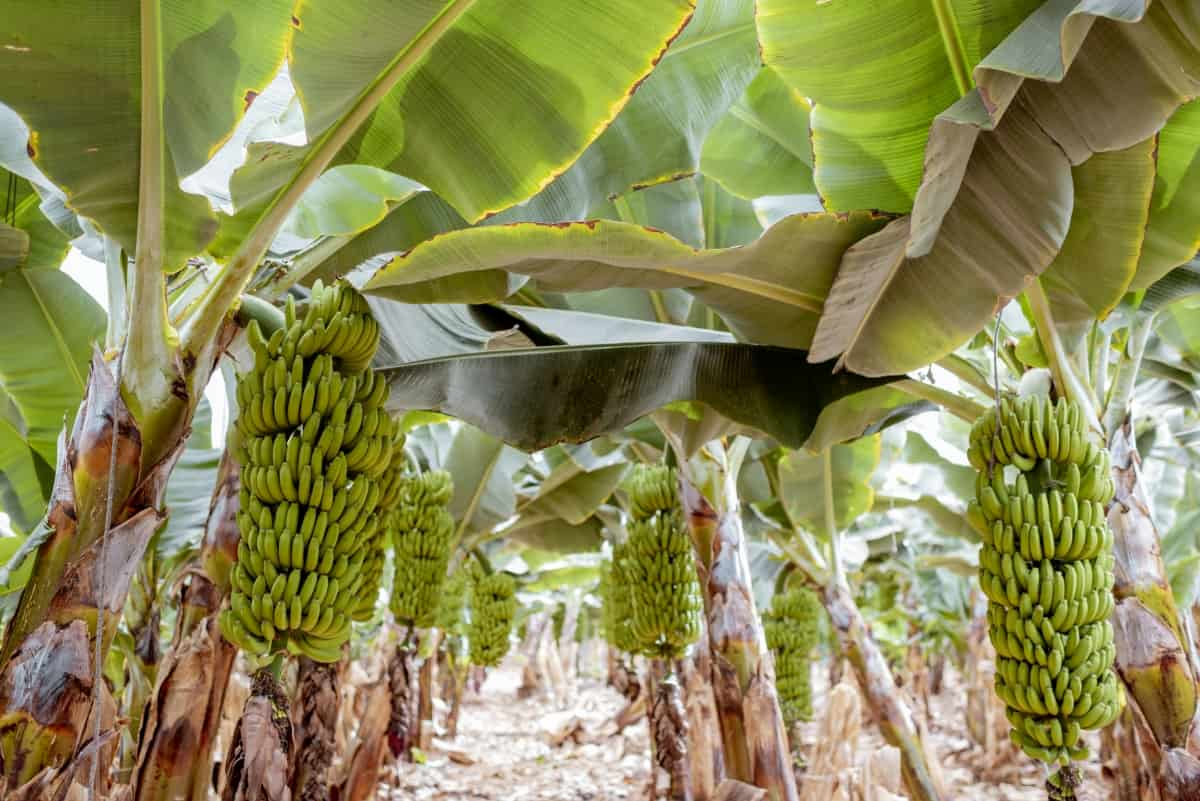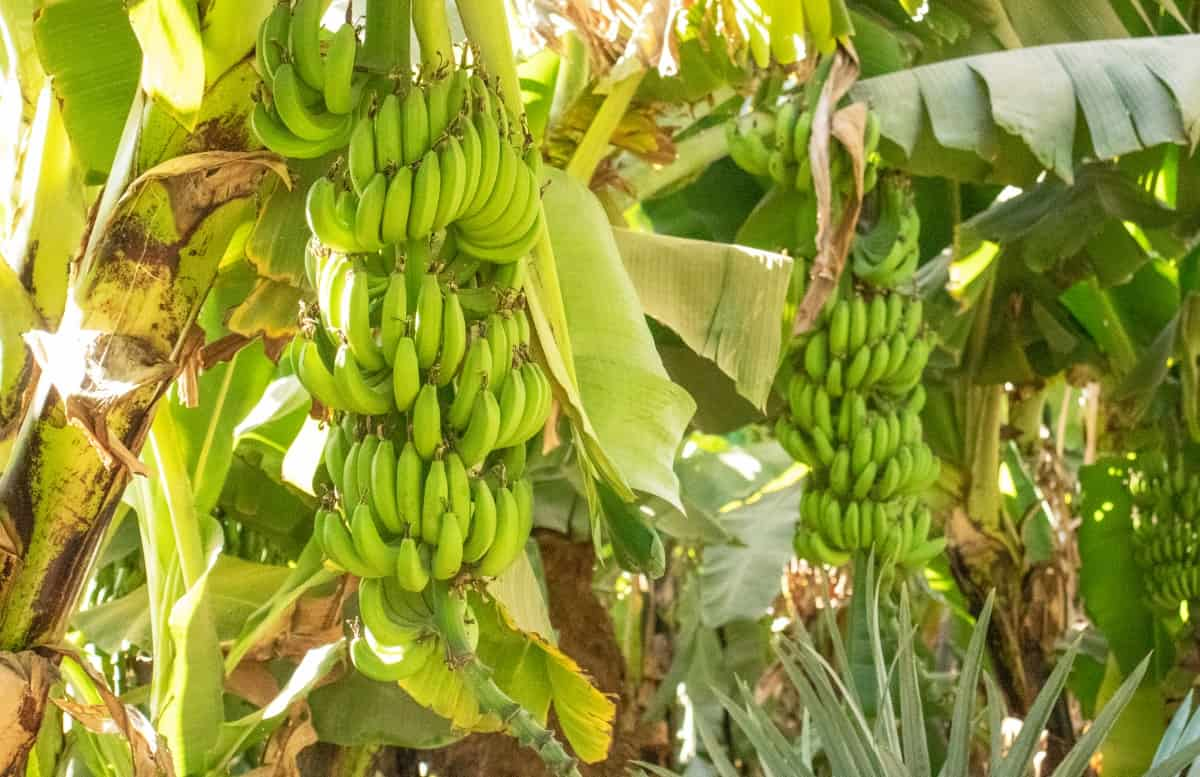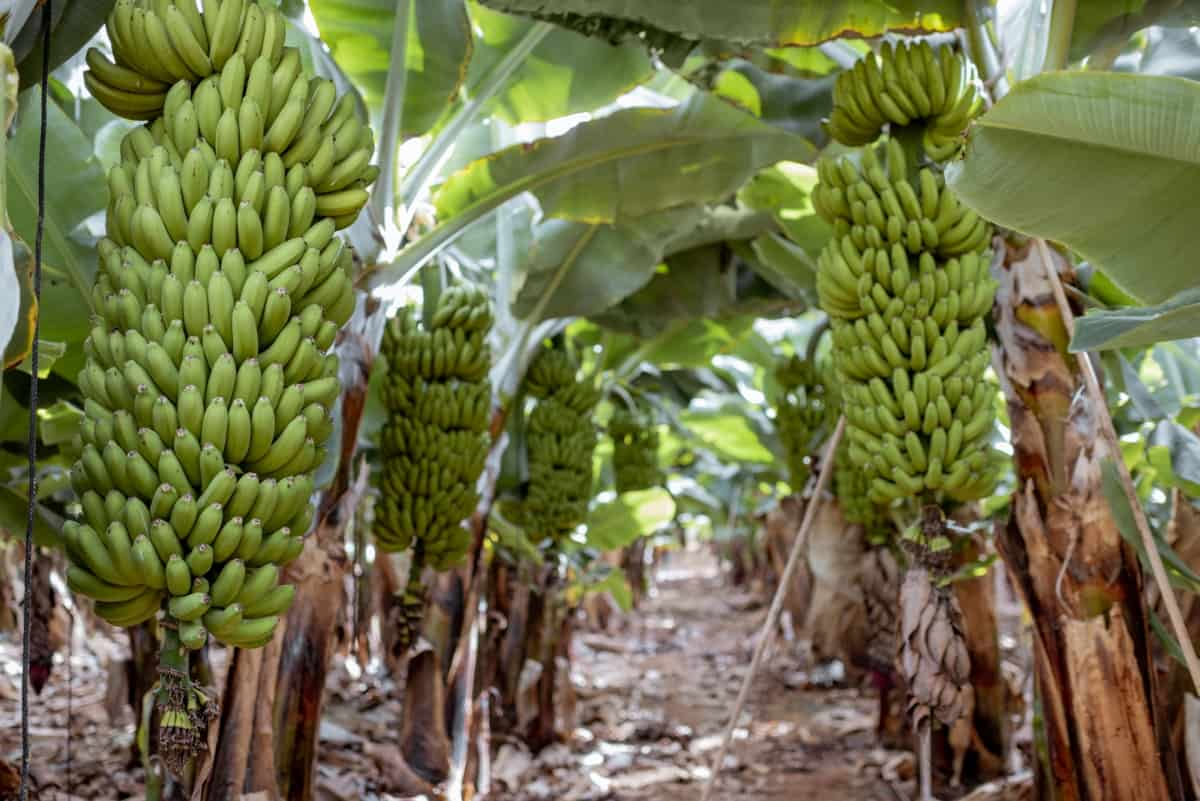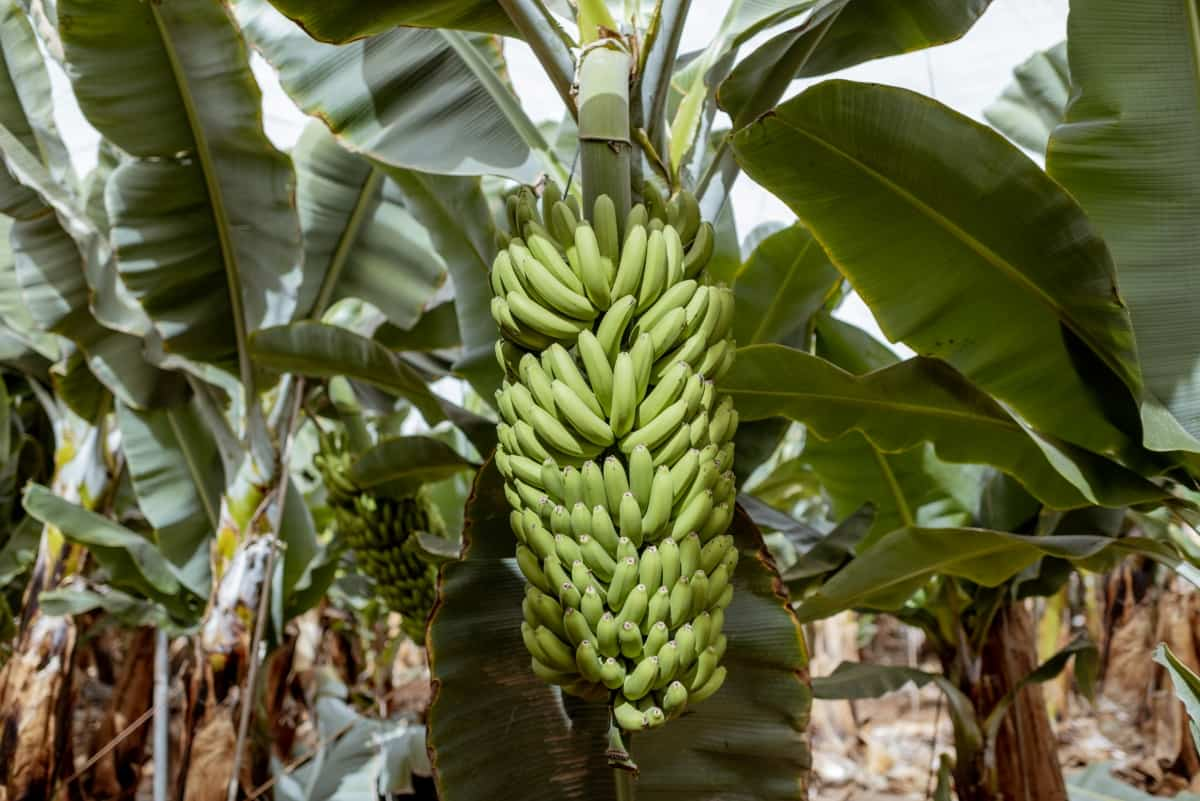Banana propagation involves the reproduction of banana plants, typically done through various methods to grow new plants. Bananas are primarily propagated vegetatively, meaning they are reproduced using parts of the parent plant rather than from seeds. This is because cultivated bananas are typically sterile and do not produce viable seeds. Here are some common methods of banana propagation.

Methods of Banana Propagation
Banana Seed Propagation
First, extract seeds from a ripe banana to propagate a banana plant from seeds. Clean and soak them in water for a day to remove pulp. Fill a container with well-draining soil and plant seeds 1 inch deep. Keep the soil moist consistently and maintain a warm, tropical environment (around 24-29°C).
Germination may take several weeks to months. Transplant seedlings to larger pots once they have a few leaves. After 6-8 months, when they’re sturdy enough, transplant them into the garden or a larger container. Note that bananas grown from seeds may not be identical to the parent plant, so expect some variability.
Banana Propagation through Suckers
Banana propagation through suckers is a common and reliable method. Select a healthy mature banana plant, and identify young shoots or “suckers” emerging from the base of the main plant. Use a sharp tool to separate these suckers from the parent plant, ensuring they have some roots and a few inches of pseudostem.
Transplant the suckers into well-draining soil in a sunny location. Keep the soil consistently moist and provide proper care. These suckers will grow into genetically identical clones of the parent plant, producing fruit within 9-12 months. This method is preferred over seeds for preserving the desired banana variety’s characteristics.
Rapid Banana Propagation through Corm Division
Rapid banana propagation through corm division is an efficient method. Identify a mature banana plant with multiple pseudostems (corms). Carefully separate the corms at the base of the plant using a sharp tool. Each corm should have some roots and a portion of the pseudostem.
Replant these divided corms in well-draining soil, ensuring they are at the same depth as before the division. Maintain adequate moisture and a warm, sunny environment. Within a few months, the corms will develop into full-fledged banana plants, which will produce fruit much faster than seeds or suckers. This method ensures genetic consistency with the parent plant.
Tissue Culture Propagation Methoid of Banana
Tissue culture propagation of bananas involves growing new plants from small tissue samples. Start by taking a tiny section of banana plant tissue, such as a shoot tip or a bud, and sterilize it to eliminate any contaminants. Place this tissue in a nutrient-rich agar medium in a sterile environment.
In case you missed it: How to Prepare the Land for Banana Plantation: Soil Requirements and Preparation Steps

The tissue will develop into plantlets through several stages of growth. Once these plantlets are large enough, they can be transplanted into soil. Tissue culture offers rapid multiplication of disease-free, genetically identical banana plants, making it a preferred method for commercial propagation and preservation of specific banana varieties.
Micropropagation of Banana
Micropropagation of bananas, also known as tissue culture, is a precise method for mass-producing disease-free and genetically identical banana plants. It begins with taking a small piece of banana plant tissue and sterilizing it to eliminate contaminants. This sterilized tissue is placed in a nutrient-rich agar medium in a controlled, sterile environment.
Over several weeks, it develops into small plantlets. These plantlets are then transferred to soil or another suitable growing medium. Micropropagation is a valuable technique for rapidly and consistently producing banana plants with desired traits, making it a preferred method for commercial banana production and research.
Propagation of Bananas through Grafting
Bananas are typically propagated through suckers or offshoots rather than grafting. Banana plants have a unique growth habit where they form a single pseudostem with multiple leaves and a large underground rhizome. Grafting typically involves joining the stem of one plant (called the scion) onto the rootstock of another plant. In the case of bananas, there is no suitable stem or rootstock to graft onto, as the entire plant is interconnected. Additionally, banana plants are fast-growing, and it is often more efficient to propagate them through their natural methods.
Propagating Clumping Banana Varieties through Division of Rhizomes
Clumping banana varieties can be propagated through rhizome division. First, identify a mature clump with multiple pseudostems. Carefully dig up the clump, trying to preserve as many roots as possible. Then, using a sharp tool, divide the clump into smaller sections, ensuring each section has a portion of the rhizome and a few healthy pseudostems.
In case you missed it: The Complete Guide to Banana Farming: Steps of Planting to Harvesting for Beginners

Replant these divided sections in well-draining soil at the same depth as before. Water thoroughly and provide adequate sunlight. Over time, each section will grow into a separate clump, producing genetically identical bananas. This method is an effective way to multiply clumping banana plants and expand your harvest.
Vegetative Propagation Techniques for Banana
Vegetative propagation methods for bananas are essential to preserve desirable traits. The primary techniques include sucker removal, corm division, and tissue culture. Suckers, or offshoots, are young shoots emerging from the base of the mother plant, which can be carefully separated and replanted.
Corm division involves dividing the underground corms into smaller sections with roots and shoots for replanting. Tissue culture enables rapid multiplication from small tissue samples in a sterile environment, producing genetically identical plantlets. These methods maintain the specific qualities of the parent plant and are crucial for consistent, disease-free banana production, especially for commercial cultivation and the preservation of specific banana varieties.
Frequently Asked Questions
What are the Methods Of Propagation Of Bananas?
Bananas can be propagated through three primary methods: division of suckers, tissue culture, and using seeds. Division of suckers involves separating and replanting offshoots from the parent plant. Tissue culture is a modern method that uses small tissue samples to grow new plants. Seeds are rarely used due to the sterility of most cultivated banana varieties.
What is the Banana Micropropagation Technique?
It involves the aseptic culture of small plant tissue pieces, like shoot tips or nodal segments, in a nutrient-rich agar medium in a laboratory setting. This technique allows for the production of large numbers of genetically identical banana plantlets, which is crucial for maintaining desirable traits and controlling diseases in commercial banana cultivation.
In case you missed it: Backyard Banana Tree Landscaping Ideas: Creating a Tropical Oasis

Conclusion
In conclusion, various techniques exist for banana propagation, each suited to different circumstances. Sucker removal and corm division offer straightforward, traditional methods for home gardeners. Tissue culture provides a precise, lab-based approach for commercial growers seeking disease-free, genetically identical plants. Understanding these methods empowers growers to choose the best approach for their needs and goals.
- Feed Your Flock for Less: Top 10 Tips to Save on Chicken Feed
- Ultimate Guide to Ossabaw Island Hog: Breeding, Raising, Diet, and Care
- Hatching Answers: The Top 10 Reasons Your Chickens Aren’t Laying Eggs
- Eggs and Economics: Breaking Down the Cost of Raising Backyard Chickens
- Defend Your Greens: Proven Methods to Keep Iguanas Out of Your Garden
- Ultimate Guide to Cinnamon Queen Chicken: A Comprehensive Guide for Beginners
- Ultimate Guide to California Tan Chicken: Breeding, Raising, Diet, Egg-Production and Care
- Ultimate Guide to Marsh Daisy Chicken: Breeding, Raising, Diet, and Care
- 10 Types of Chicken Farming Businesses You Can Start for Profits